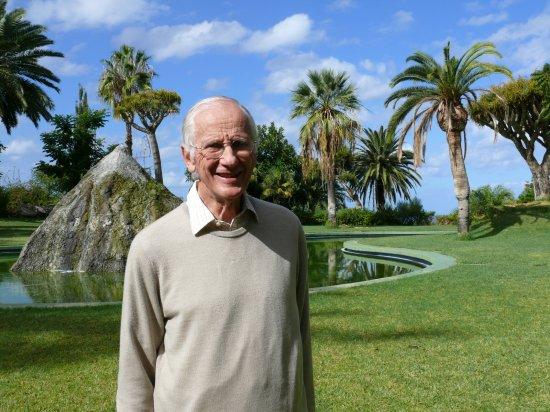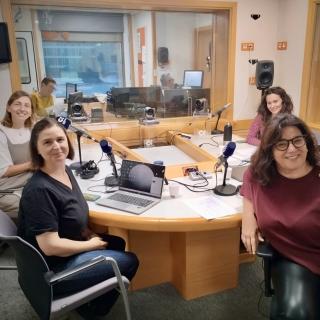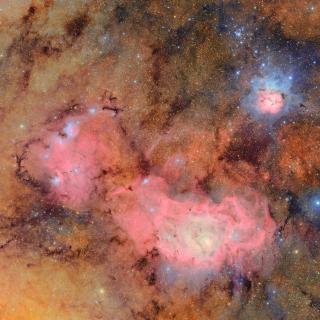For lovers of the tango to say “Twenty years is as nothing” has a clear sense: time goes by without our noticing it. But for a man like Rod Davies, who has seen a genuine revolution in his field (the origin and evolution of the universe) this time has been vital to find some of the answers. An Emeritus Professor of the University of Manchester this British scientist has worked as a researcher and Professor of Radioastronomy at the Jodrell Bank Observatory, in the United Kingdom. During his professional career his work contributed to serious questioning of the Steady State theory of the universe, and to supporting the alternative now considered much more probable, and which is accepted by the vast majority of professionals in the field, the Big Bang model. And Davies, as he stated during the Winter School (of 2007) in the Institute of Astrophysics of the Canaries (IAC) knows for sure that this Institute and its Teide Observatory, in Tenerife, have had a role is the story.
The confirmation of the existence of the Cosmic Background Radiation was of great importance as the most powerful proof of the Big Bang, which explains the expansion of the universe and the origin of the light elements.. But this radiation has had to travel a long way before it reaches us. “In the first place, to reach us” says Davies “the signals of the Cosmic Microwave Background which have come from the far reaches of the universe have to pass through clusters of galaxies and through the different components of the Milky Way before they finally enter the Earth’s atmosphere. Each one of these obstacles adds its own signature which must be separated from the signal of the Background Radiation”.
CONTAMINATING SOURCES
As Davies warns us, there are a number of physical processes in nature which can mask the Cosmic Background Radiation. We must identify and subtract off these sources which can contaminate the cosmological data. Two of these types of emission were already known. “One of them” explains this British scientist” is the synchrotron emission which comes from the cosmic ray electrons rotating around the magnetic field of the Galaxy”. This is a type of non-thermal radiation generated by charged particle, usually electrons, which orbit in a spiral around the magnetic field lines at a velocity close to that of light. As these electrons are continually changing their direction they are accelerated and emit photons whose frequencies are determined by the velocity of the electron at that given moment. The radiation is emitted in a tight conical beam in the same direction as the motion of the particle. It is also polarized in a plane perpendicular to the magnetic field so that the degree and the orientation of the polarization give us information about the magnetic field of the source. “The other type of emission” continues Davies “is the free –free emission which we receive from hot free electrons colliding with the nuclei of hydrogen, which are positively charged. But there is another type of emission the “anomalous microwave emission” which was detected during the search for the Cosmic Background Radiation. It was a completely new type of background, which was sometimes called “the X background”. “We think,” comments Davies, “that it arises from extremely small interstellar dust grains made up of between 20 and 100 atoms. The impact of photons makes these particles spin at tens of billions of rotations per second, generating waves at the corresponding radio frequencies”
The required technology
To study the Microwave Background radiation we need advanced and precise technology. Davies, as a pioneer in Europe in this field remembers that since Penzias and Wilson discovered the radiation in 1964 “the field has grown so as to convert the study of the evolution of the universe into the centerpiece of the cosmological scene”.
“This growth” adds Davies, “has been possible thanks to the amazing advances in technology which have taken place during this period. After the first detection of the Microwave Background, the next objective was to detect its dipole, due to the movement of the Local Group of Galaxies, at some 600 km/s with respect to it. The dipole signal was one thousandth of the signal from the Microwave Background itself. Twenty years of sophisticated experiments around the world produced an advance in instrumental sensitivity by more than a factor of 100 which was needed to detect the fluctuations (“wrinkles”). The first fluctuations were found with ground-based experiments, and later with instruments in space. It has been an exciting voyage of discovery in which I have taken part”.
THE IAC’S PARTICIPATION
In this journey scientists and instruments from the Institute of Astrophysics of the Canaries have also taken part, specifically in the Tenerife Experiment, the COSMOSOMAS experiment, and the Very Small Array (VSA) all of them at the Teide Observatory. Davies explains that “The Tenerife Experiment, using a switching beam and interferometry was one of the first to detect structure in the Cosmic Microwave Background and to show the existence of the anomalous emission”.
“The COSMOSOMAS experiment” continues Davies “continued the work of the Tenerife Experiment and showed definitively the spectrum of dust which showed that the anomalous emission is in fact due to spinning dust”.
With this the importance of combining ground-based and space-based experiments was shown. In Davies’ view it has been clearly shown that there are excellent places on the ground to study the Cosmic Background. “On the ground we are not limited by the size of our equipment and so we can achieve higher angular resolution than the present generation of space experiments. There is much more to do at high resolution with the Cosmic Background Radiation, and with the foreground radiation which contaminates it. A new area of research which is a new technical challenge is the study of the polarization, especially of the B modes, which probes the very early universe, the epoch of Inflation. This work will be started from the ground”.
As for space missions these have been basic for obtaining definitive information. This was the case for George Smoot and John Mather, who received the Nobel Prize in 2006 thanks to the data obtained with COBE (Cosmic Background Explorer Satellite). “That satellite” recalls Davies “was able to map the whole sky with sufficient sensitivity to detect the Cosmic Background , but it could not detect the small angular scales which could in fact be detected from the ground. COBE showed that the Background is highly uniform ( to one part in a hundred thousand) which confirmed its cosmological origin. Also the faint fluctuations which it detected were a level which agreed with the predictions of an evolutionary cosmology. Those were important advances”.
FROM SPUTNIK TO TEIDE
For Davies there were two key moments in his career. The first was directly related to the space race: the surprising and inspiring vision of the reflection of sunlight from the launch platform of Sputnik 1 as it crossed the sky above Jodrell Bank on the night of October 5th 1957. “Being able to track the rocket (by its radio signals) “he explains “Instantly justified the construction of the 250 foot radiotelescope (now known as the Lovell Telescope, after Sir Bernard Lovell the first director of Jodrell Bank who conceived and built it) and ensured its funding. We celebrated the 50th anniversary of that event last month. All my career has been strongly linked to that telescope, from when I started as an Assistant Professor at the University until I became the director”.
The second decisive moment was linked to the experiments carried out on Tenerife. “Working on cosmology with the telescope led me to 20 years of research looking for the Cosmic Microwave Background Fluctuations, culminating in the second of the experiences which I was waiting to achieve, detecting them thanks to the Tenerife experiments carried out at the Teide Observatory in Izaña. For that I am deeply grateful to my colleagues at the IAC, and later to my colleagues at Cambridge. There can be no doubt that the gratitude is mutual.



